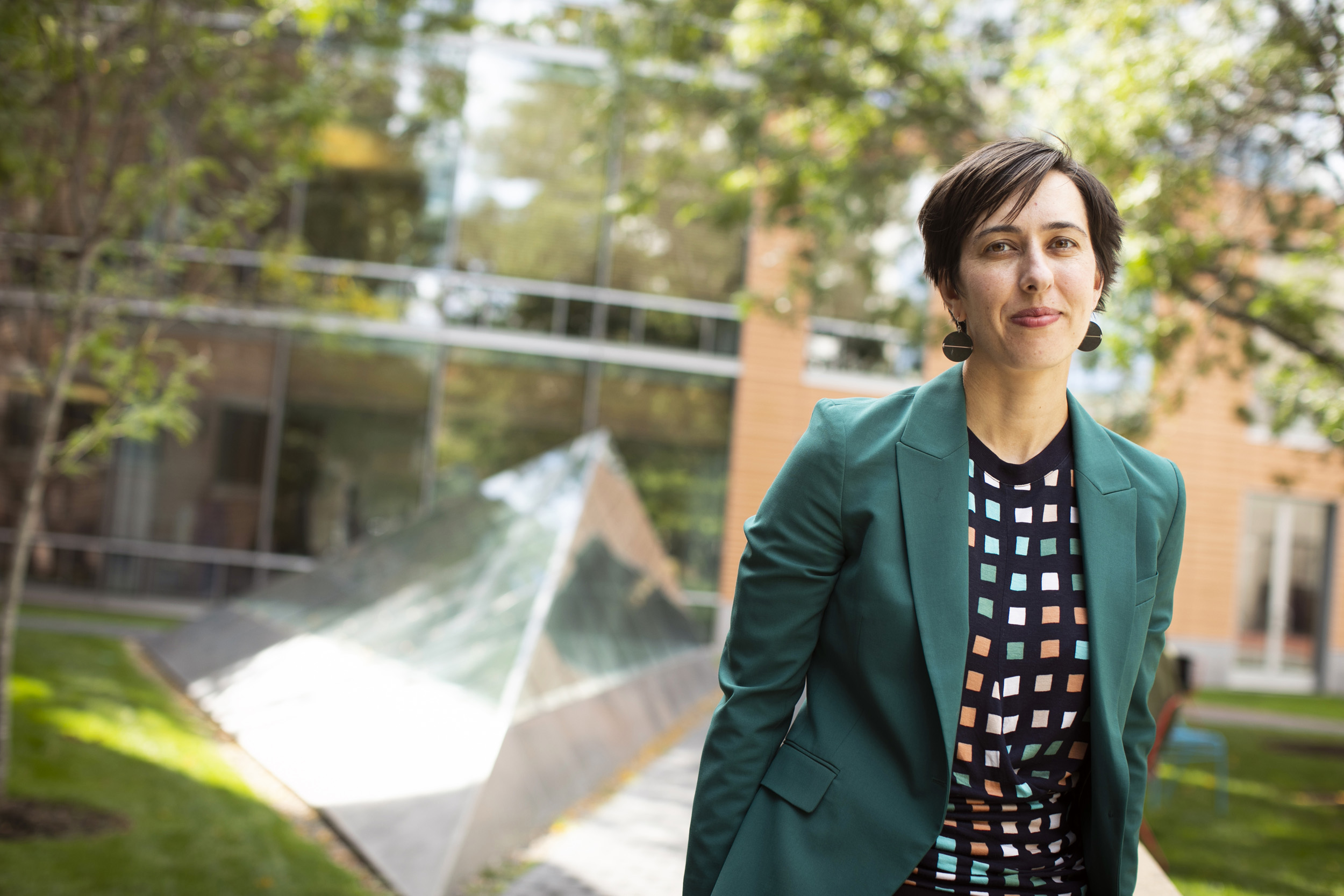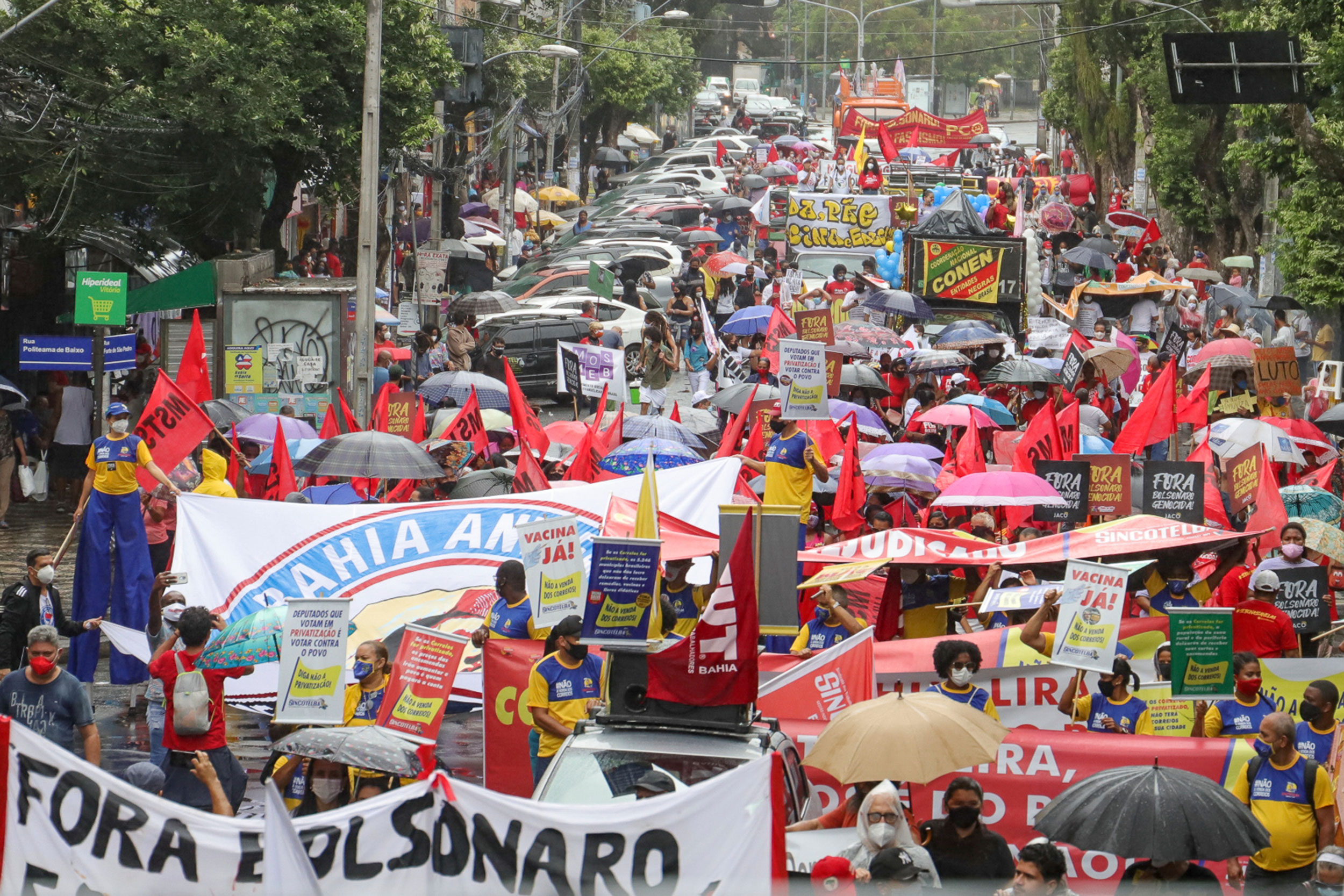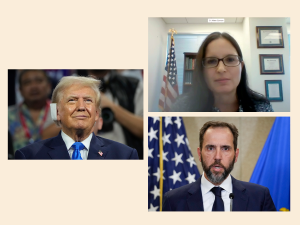
There are multiple political and economic factors that have exacerbated the pandemic in Latin America, says Alisha Holland, an associate professor in the Department of Government.
Stephanie Mitchell/Harvard file photo
From bad to worse in Latin America
Assessing political, social impact of pandemic, scholar zeroes in on structural factors behind death rate
COVID-19 has ravaged Latin America, killing 1.3 million people, fueling recession, and unleashing widespread political upheaval. In many countries, protests over inequality, slow growth, and corruption predated the pandemic, but during the outbreak demonstrations have intensified as people have taken to the streets to demand economic assistance and vaccines. In an interview with the Gazette, Alisha Holland, an associate professor in Harvard’s Department of Government, discussed the social and political effects of COVID-19 in the region.
Q&A
Alisha Holland
GAZETTE: Why has the pandemic so devastated Latin America?
HOLLAND: There are two structural factors that have contributed to the high death rates. One is that Latin America has long been a region with very high rates of economic inequality and a large informal economy. What that meant during the pandemic is that many governments implemented strict quarantine policies, but that doesn’t necessarily mean that people could comply with those policies. Many low-income people, and especially those working in informal jobs, still needed to leave their homes to make a living and to survive. At the same time, much of the housing stock in Latin America has been self-constructed in informal settlements. Many people live in crowded conditions that make it very easy to transmit viruses, which might have accelerated the spread in some places. The second structural factor is that health systems across the region still lack both human and technical resources to really combat the pandemic. We’ve seen limited oxygen supplies, limited vaccine supplies, and slow rollouts of vaccination, which explains why the pandemic probably has been deadlier in Latin America than other places.
At the same time, it’s important to emphasize that policies matter. The example set by President [Donald] Trump played an important role in shaping the responses of some leaders in the region. President Jair Bolsonaro in Brazil deeply admired Trump and showed a similar denial of the pandemic and an unwillingness to implement lockdowns or mask mandates, which really left governors and mayors to implement their own policies and attempt to combat the public messaging that was de-emphasizing the threat from the pandemic. That certainly contributed to the outbreak in Brazil.
Protesters in Brazil took to the streets on July 24 voicing opposition to President Jair Bolsonaro, while defending COVID-19 vaccines.
Sandoval Ferreira Jr./Medialys Images/Sipa via AP

GAZETTE: What’s been the political impact of the pandemic in the region?
HOLLAND: There are two ways to think about this question. One is in terms of broad trends that have been reinforced and accelerated by the pandemic, where we saw a convergence of two things happening in the region. Latin America had come to the end of the commodities boom, which was a period of rapid growth and economic progress that allowed for the implementation of new social programs. The boom led to a growing middle class as well as higher rates of school attendance and college enrollment. What that meant is that many people had high hopes for social mobility. But when the commodities boom ended around 2013, growth started to slow and hopes of upward mobility started to fade. The pandemic further dashed people’s expectations: Children are dropping out of school, people are unemployed, social programs are overstretched, and many people believe that social mobility is no longer possible.
At the same time, many people started to feel that their governments had failed them, and this preceded the pandemic. Latin America experienced a massive corruption scandal related to the construction industry, and more broadly, there was a lot of misuse of resources during the commodities boom. Corruption scandals undercut people’s confidence in their governments.
The second way to answer your question is to think about the impact that government performance during the pandemic has had on politics in the region, and that is a lot less clear. Some politicians have been surprisingly unscathed by the poor response to the pandemic. For example, at least until recently, Bolsonaro managed to maintain high levels of popular support despite the rising death toll in Brazil. Part of the explanation is that he also invested heavily in cash transfers to help people make it through the pandemic. But Andrés Manuel López Obrador in Mexico also fared decently in the midterm elections this past June, and yet he neither had an effective public health response to the pandemic nor did he implement social programs to help people. You’ve also seen governments that quote-unquote did everything right and followed public health advice, like Chile and Peru, but they have not seen a boost to the popular ratings of their presidents or increased confidence in government. In that sense, the specific policies adopted by governments during the pandemic have not changed what I think is the broader story of underlying social malaise and distrust in government.
GAZETTE: How much of a factor is COVID in the recent demonstrations in Cuba?
HOLLAND: The protests in Cuba share some of the same triggers as those in other parts of Latin America—economic decline, government failures, and underlying inequality — that the pandemic heightened. The country is grappling with its worst economic decline since the collapse of the Soviet Union, which began when Venezuela cut back its economic support in 2016, but has been exacerbated by the decline in tourism, remittances, and business activity with the pandemic. The pandemic also has exposed many of the government’s failures to provide basic social services to its citizens. Despite being known for its well-trained doctors and public health system, Cuba has struggled to find hospital beds and sufficient doctors and vaccines to respond to the coronavirus. And economic and racial inequalities have played a key role in the protests. Cuba started to introduce market-oriented reforms in recent years, but the sense is that these have benefited well-connected and primarily white Cubans, who also have had an easier time during the pandemic due to greater access to remittances and supplies provided by relatives in the United States.
GAZETTE: Is there a unifying thread in the protest movements that developed before and during the pandemic in Latin America?
HOLLAND: The common factor across the region is an increase in anti-incumbent voting, which shows people’s frustration with their governments, regardless of whether the government is on the left or the right, or followed public health advice or disregarded it. There’s a sense of “Just throw all the politicians out.”
Some of the other common factors across these social protests go back to my earlier point about the combination of high social expectations, which brought people to the streets even before the pandemic, and growing disillusionment with government, which grew following the corruption scandals revealed after the commodities boom. Another factor that’s important to highlight is police repression. In many of these cases, protests started over economic issues, for example tax reform in Colombia and the rise in subway fares in Chile. In both cases, the police ended up spurring on protests because they responded with such brutality that it brought to the fore inequalities in the ways that the police are deployed, and also legacies of authoritarian periods in the region. The combination of high social expectations, disillusionment with government, and the complicated act of policing protesters has really fueled many of the large protest movements we’ve seen in the region.
GAZETTE: As part of the upheaval throughout the region, we have seen the implosion of traditional party systems, and the rise of outsiders such as Nayib Bukele in El Salvador and Pedro Castillo in Peru. What does this mean for democracy in the region?
“The pandemic has exposed many of the government’s failures to provide basic social services to its citizens.”
HOLLAND: We see some different trends playing out across the region in how outsiders are potentially reshaping the system. Some politicians are essentially changing the system from within, using their supramajorities. If you look at Bukele in El Salvador, his party now controls more than two-thirds of the seats in Congress, so he doesn’t need any opposition support. He has been using his supramajority, along with his popularity, to dismantle many basic institutions. It’s a slightly different story if you look at Peru and think about what might happen under Castillo. He will be coming to power with a very weak electoral mandate. In the first round, no candidate had more than 20 percent of the vote, and the second-round election was so tight that he pulled off a narrow victory. Castillo also has few legislators behind him. If Castillo wants to implement radical plans to change the economy, he is going to hit legislative resistance and potentially also bureaucratic resistance; technocrats are still in most of the major state institutions. The big question is whether a fight between the president and the legislative branch will take place. And if it does, will he try to shut out Congress and govern on his own? Or will the legislature impeach him first, creating another governability crisis? The result is a highly unstable government. In both cases, liberal democratic institutions are very much under threat.
GAZETTE: In the wake of COVID-19, some experts are talking about a “lost decade” for Latin America. What is your take on this?
HOLLAND: On one hand, I share a lot of the pessimism. Look at what’s happened to education during the pandemic. Virtual schooling simply does not work in most of Latin America, where access to internet and computers is stratified across class lines. We’re looking at at least a year of lost schooling for the poorest segments of the population. Given the low vaccination rates, Latin America doesn’t really have plans to reopen schools anytime soon, which is going to exacerbate existing divides between the wealthy, where virtual schooling has been more possible or private schools have put in place safety measures to reopen, and those without access to those resources. We’re looking at a grim widening of inequalities over the next decade in the region. On the other hand, if we try to be more optimistic, the hope is that this has raised consciousness about the importance of government in people’s lives, narrowly in terms of having health systems that are able to respond to public health crises and more broadly in terms of unemployment support and social safety nets. Hopefully, people, particularly the wealthy, realize that their well-being is impacted by what happens in the rest of society, and this could create a stronger social consensus around the need for taxes and social programs to move toward a more equitable society in the medium term.
GAZETTE: What responsibility does the U.S. have to mitigate the effects of the pandemic in Latin America?
HOLLAND: President Biden’s initiatives to export vaccines and to suspend patents for vaccines are important in recognizing that a global pandemic will not be over until every region of the world is able to control the pandemic. In that sense, the United States has a strong responsibility to invest in public health globally. A second key issue is the United States’ role in promoting democracy in the region. We’re coming off a period in which that commitment was unclear and are entering a period in which threats to democracy are spreading, such as in Nicaragua. I think the United States is going to have to step up its condemnation of those practices and reconsider policies of targeted sanctions.
But the United States is in a real bind, at least when it comes to Central America. There’s a push to address the root causes of migration, which are understood as both poverty and corruption. The Biden administration does not have strong allies in Central America right now to implement policies to stem migration because that requires working relationships with these governments and condemning the very leaders they need to work with. I don’t think the administration has been fully honest about how complicated it is to stem migration, at least with the current approach of addressing root causes, and at the same point, maintaining a consistent policy against human rights violations and support for democracy in the region. I hope the U.S. government does continue to speak out against human rights abuses, play a stronger role in upholding democratic values and providing greater social assistance, but that is very tricky at the moment, especially in Central America.
This interview has been edited for length and clarity.




